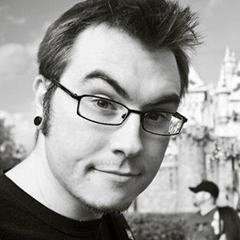BioShock: Infinite Message Board older than one year ago
↕

↕


↕


↕

↕

↕


↕


↕


↕

BioShock Infinite was the top-selling game in the US for March, besting Tomb Raider and Gears of War: Judgment for top honors. Compared to March 2012, last month's physical retail game sales were ten percent weaker, while hardware pulled in 32 percent less revenue.

↕

BioShock Infinite was the top-selling game in the US for March, besting Tomb Raider and Gears of War: Judgment for top honors. Compared to March 2012, last month's physical retail game sales were ten percent weaker, while hardware pulled in 32 percent less revenue.

↕


↕


↕

How to transform a Shakespeare soliloquy from a gorgeous ballad of love and loss into the chilling stuff of nightmares: Whisper it Play it backwardBioShock Infinite features hidden dialogue in its Possession Vigor, both in the scene where players first encounter the stuff, and when it's used to possess enemies. It's a line from Romeo and Juliet, played backward and whispered: "Come, gentle night, come, loving, black-brow'd [night] / Give me my Romeo; and, when he shall die / Take him and cut him out in little stars."

↕


↕


↕

↕

↕


↕

"I am very proud of the work that I did and of the team and what they were able to accomplish on Infinite," Fergusson says. "Now with the game shipped successfully, I've done what I set out to do here and now I'm looking forward to the next chapter in my life and career."
When Fergusson joined Irrational, he followed a trail of major departures from the studio, including Art Director Nate Wells and Design Lead Jeff McGann. There's no word on what Fergusson's next move will be.

↕

Now, all the original designs up for the vote are available for printing, along with a few more custom designs, like the one we chose above. Covers are available in PC, Xbox 360 and PS3 versions. Irrational warns fans fans to follow the printing instructions and do a test run before wasting glossy paper. So many pretty covers to choose from.

↕

- Subscribe via iTunes here
- Subscribe via RSS here
- Download the MP3 here on PS3, PS Vita or PC (Right-Click->Save As)
We’re back, well-rested after last week’s GDC, and ready to return to our regularly scheduled Blogcasting. This week, we considered spoiling BioShock Infinite (but we’ll save that for the end of next week’s show), gushed about the simple-yet-sensational Divekick, delve into the pleasures of Puppeteer, and recap our favorite games from GDC (Guacamelee!). All this plus next week’s new releases, a selection of 100% organic listener tips and voicemails, and much more.
Stuff We Talked About- BioShock Infinite
- Divekick
- Guacamelee!
- Puppeteer
- Nobunga vs. Nobunaga
Send us questions and tips: blogcast@playstation.sony.com



- Sid Shuman – PlayStation Social Media Manager
- Nick Suttner – PlayStation Account Support Manager
- Justin Massongill – PlayStation Social Media Specialist
[Editor’s note: PSN game release dates are subject to change without notice. Game details are gathered from press releases from their individual publishers and/or ESRB rating descriptions.]
- Thanks to Cory Schmitz for our beautiful logo and Dormilón for our rad theme song and show music.

↕

The following theory is not true, but it could be. It’s surely no accident that BioShock Infinite often evokes The Wizard of Oz – there’s even an early stage of the game named after it. Even so, the similarities, be they deliberate or coincidental, run deeper than a turn-of-the-century character being mysteriously transported to an amazing world of technology and magic. Once I started down the yellow brick road of looking for parallels between Dorothy’s adventure in Oz and Booker’s adventure in Columbia, I couldn’t stop – I identified what seemed to be dozens of them. Am I onto something, or am I projecting? It doesn’t matter – this is purely a thought experiment, not a claim to accuracy.
Also, SPOILERS UNBOUND. Do not read past this point if you haven’t completed the game. (Or if you somehow haven’t seen/read The Wizard of Oz). If you have, fire up Dark Side of the Moon and let’s go off to see the wizard.(more…)

↕

Plaidhat Games is working on the board game port version of BioShock Infinite, which features two warring factions from the game, the Vox Populi and Founders. Commanding "mobs of combatants," each team attempts to conquer the districts of Columbia, the city in the sky; the Founders wish to control it, while the Vox Populi intend to bring it crashing down.
The video game's main characters, Booker and Elizabeth, play a role in the board game, forcing players to "reconsider their strategies as the two cut a path through the burning city."
Siege of Columbia is available for pre-order now, at a discounted price of $60 from Plaidhat Games (normally $85). It's currently under construction and will ship in two to five months.

↕


↕


↕


↕


↕


↕


↕


